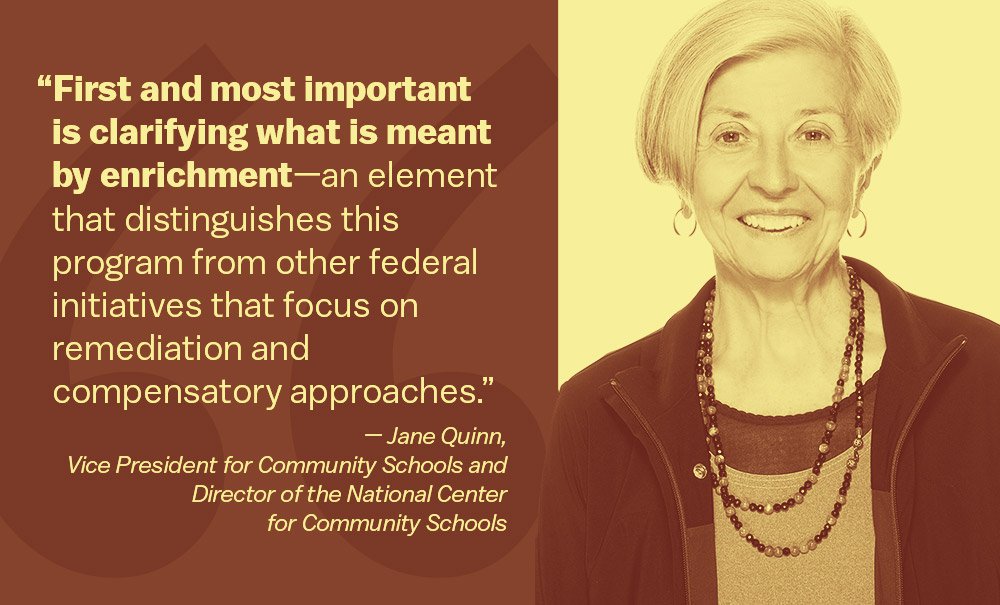
“WF: You were involved in the community schools movement from the early days. Can you reflect on where it was back then and how it has evolved?
JQ: Well, I wasn’t there in the really early days—that would have been at the turn of the 20th century when John Dewey, the renowned educational philosopher, wrote a monograph entitled Schools as Social Centers (1902). He had the right idea then, and his work has influenced several generations of community school leaders. In 1998, John Rogers, a UCLA education professor, wrote a seminal paper on the history of community schooling in America, documenting that the current generation of community schools is the fourth such iteration of the work to foster strong relationships between schools and their local communities.
My involvement in this current generation of community schooling includes two phases. First was my work as a program director at Wallace in the mid- to late-1990s, which helped to create the Extended-Service Schools Initiative. And second, was my 18-year tenure as director of the National Center for Community Schools, a program of Children’s Aid.
In my view, all of these early investments contributed substantially to the current community schools movement, which is demonstrating success in informing federal, state, and local education policy and in responding to the documented needs of students and families in what is now being referred to as the post-COVID environment. More than 100 districts nationwide have adopted community schools as a preferred reform strategy, and Congress recently authorized an additional $75 million for the USDOE’s Full-Service Community Schools program, which will provide incentives for additional districts to adopt this strategy.”
Read the full story here.